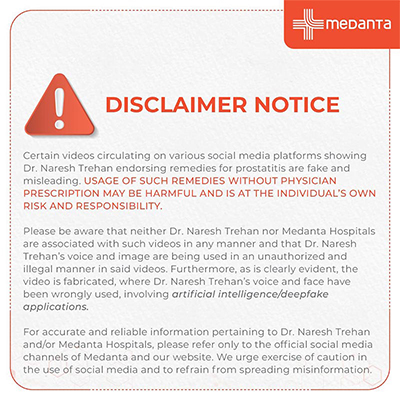Latest Advances in Minimally Invasive GI Surgeries in India

TABLE OF CONTENTS
Minimally invasive surgery has revolutionised the way Indian GI surgeons treat gastrointestinal conditions. These surgical procedures use tiny incisions ranging from 3 mm to 10 mm, which have largely replaced traditional open surgeries throughout the country. Patients now recover faster, face fewer complications and have better survival rates because of these advanced techniques.
Leading GI surgeons in India have adopted these less invasive approaches as technology has improved in endoscopy, imaging, and specialised instruments. They perform procedures like laparoscopic cholecystectomy—one of the most common minimally invasive operations worldwide—with great precision. These new methods mean patients experience less pain, spend less time in the hospitals, and have minimal scarring compared to conventional surgery.
This surgical advancement helps treat colorectal cancer effectively. Early intervention through minimally invasive techniques improves patient's survival rates and quality of life. India's best GI surgeons use high-definition video cameras that provide crystal-clear views during operations, which makes these procedures safer and more reliable. Their versatile approach now treats many gastrointestinal conditions, from simple diseases to complex tumour removals and weight loss surgeries.
Types of Minimally Invasive GI Surgeries
Indian GI surgeons commonly use three main approaches for minimally invasive treatments:
Laparoscopic Surgery: This widely used technique needs small incisions (0.5-1.5 mm) to insert a laparoscope and specialised instruments. Procedures like laparoscopic cholecystectomy became common in the late 1980s and reshaped surgical practice.
Robotic-assisted Surgery: Surgeons get better three-dimensional vision and instruments with seven degrees of freedom, which leads to more precise movements. The da Vinci Robot system has been approved since 2000 and gives exceptional control during complex procedures.
Endoscopic Surgery: This method uses flexible tubes inserted through natural body openings, so there's no need for external incisions. Techniques like endoscopic submucosal dissection help treat early-stage cancers.
Recent Technological Advancements in MAS
The rise of minimally invasive technology has been impressive. GI surgeons in India now use innovative equipment. Modern robotic systems come with fluorescence imaging that helps surgeons check blood supply around anastomosis sites and clearly identify lymph nodes. Additionally, software-regulated staplers, such as SureForm (launched in 2019), track tissue compression and adjust automatically. These staplers create reliable staple lines with a 120° articulation cone.
High-definition imaging systems that provide 3D visualisation are a game-changer. These systems magnify up to 1000-fold with NBI technology, which helps surgeons find tiny tissue abnormalities. Confocal Laser Endomicroscopy lets doctors assess cellular properties in real time, creating an "optical biopsy" without removing tissue.
Applications of MAS in Treating GI Conditions
Minimally invasive approaches have reshaped treatment for many gastrointestinal conditions. Laparoscopic cholecystectomy for gallstones is now standard practice. Colorectal cancer procedures are as safe as open surgery and help patients recover faster.
Specialised MIS techniques help treat in the following conditions:
Gastrointestinal cancers (oesophagal, gastric, colorectal)
Gallbladder disease and gallstones
Appendicitis
Hernias (inguinal, hiatal)
GERD and acid reflux
Inflammatory bowel disease
Benefits of Minimally Invasive GI Surgeries
Patients who choose top gastrointestinal surgeons in India benefit from several advantages associated with these approaches. Hospital stays are much shorter now. Open surgeries usually require 5-10 days in the hospital, but MIS patients often need minimal pain medication the next day and can go home quickly.
These procedures cause less bleeding, fewer infections (especially wound infections), and much less pain after surgery. Research shows that patients who have robotic GI procedures go back to work sooner than those who have traditional laparoscopic surgery. Many people also like that these procedures leave minimal scarring.
Challenges and Future Directions in MAS
We have a long way to go, but we can build on this progress. Surgeons need time to learn—procedures like robotic esophagectomy to become proficient. The high cost of advanced robotic systems also limits their availability.
The future looks bright, though. Scientists in India and abroad are working on robots that can replicate tactile sensations, which addresses a key limitation of current systems. Smaller robotic components will likely make more operations possible.
AI integration opens up exciting possibilities for surgical decision-making and live analytics. As these technologies improve, Indian surgeons will keep advancing patient care through more sophisticated minimally invasive approaches.
Conclusion
Minimally invasive GI surgeries mark a remarkable leap forward in Indian healthcare. These techniques have changed patient's experiences through smaller incisions, reduced pain, and faster healing times. The benefits speak for themselves.
Some challenges remain. Surgeons must complete many procedures to master these techniques. The cost of advanced equipment also limits its availability in some parts of India.
All the same, progress continues. Robotic systems continue to improve, and developers work on tactile feedback mechanisms to fix current limitations. AI will improve surgical precision, while smaller equipment helps treat hard-to-reach areas.
This revolution in GI surgery keeps moving forward. Traditional open surgeries still matter in specific cases, but minimally invasive approaches have become the preferred standard.
Skilled doctors with advanced tools will help patients face less disruption from gastrointestinal conditions.
FAQs
What are the main types of minimally invasive GI surgeries performed in India?
The three primary approaches are laparoscopic surgery using small incisions, robotic-assisted surgery for enhanced precision, and endoscopic surgery through natural body openings.
How do minimally invasive GI surgeries benefit patients?
Patients experience reduced pain, shorter hospital stays, faster recovery times, minimal scarring, and lower infection rates compared to traditional open surgeries.
What recent technological advancements have improved minimally invasive GI surgeries?
Recent innovations include fluorescence imaging for better visualisation, software-regulated staplers for improved tissue handling, and high-definition 3D imaging systems for enhanced precision.
What challenges do surgeons face with minimally invasive GI procedures?
The main challenges include a steep learning curve for mastering the techniques and the high costs associated with advanced robotic systems, which can limit availability in some regions.
What does the future hold for minimally invasive GI surgeries in India?
The future looks promising with ongoing developments in robotic systems, including tactile feedback mechanisms, further miniaturisation of equipment, and the integration of artificial intelligence to enhance surgical precision and decision-making.






